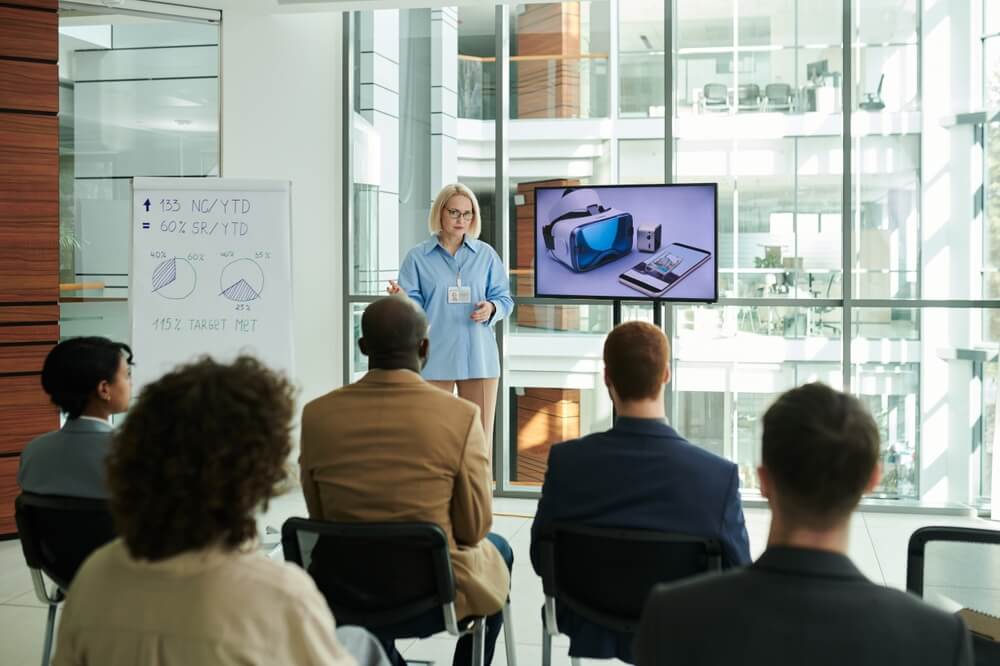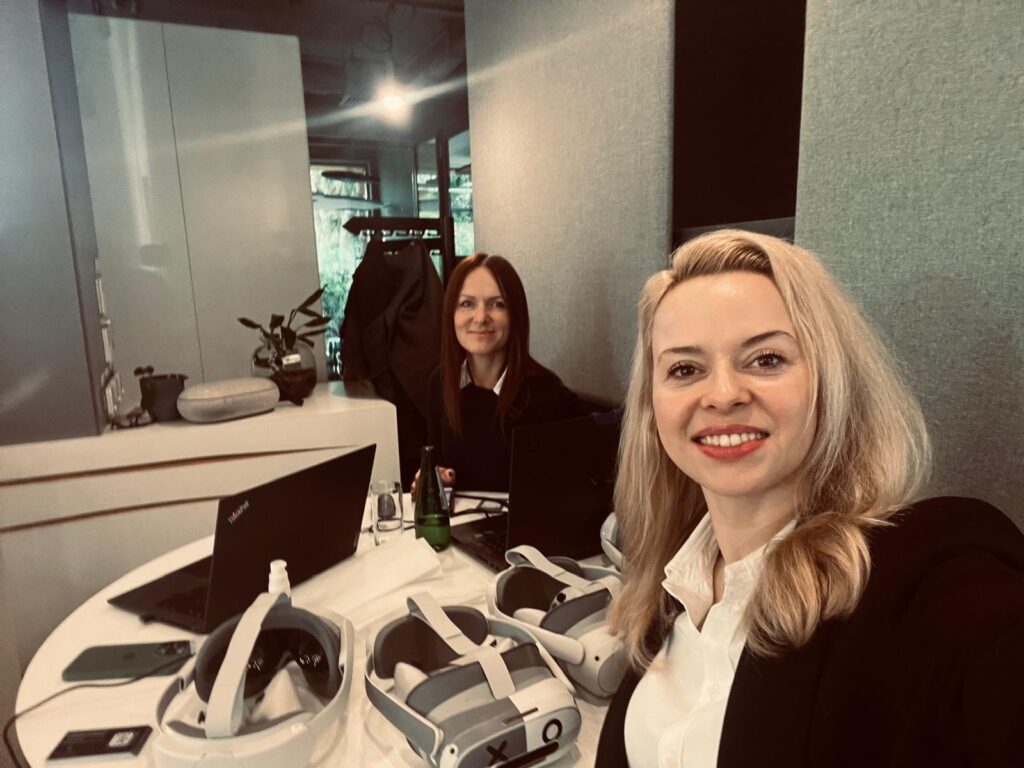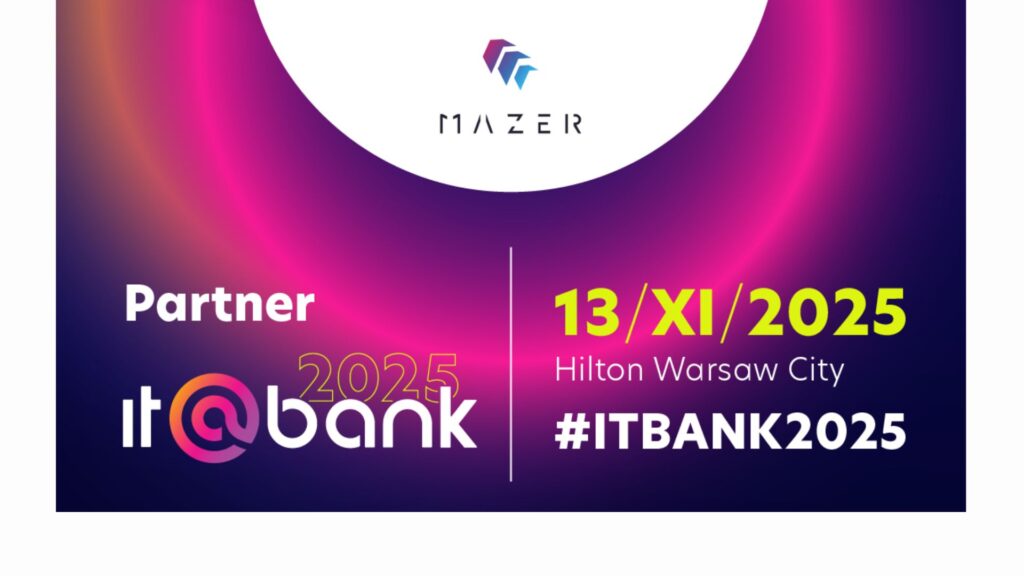How To Identify Your Clients’ Training Needs Before Launching VR Courses?
Table of Contents:
Identifying your clients’ training needs before launching VR courses is a strategic advantage that training companies must take to ensure lasting success. Immersive technology is growing rapidly, and as more companies push toward digital transformation, there’s a natural urge to adopt VR training. However, real impact comes from solutions that address your clients’ genuine challenges and learning goals. By grounding your VR initiatives in thorough needs assessments, you deliver targeted, measurable results and build strong, trusted client relationships.
Key Takeaways
- Needs assessment first:
Lasting VR training success begins with thorough client analysis, ensuring solutions solve real business problems instead of being “nice-to-have” tech. - Deep stakeholder engagement:
Conversations with managers, HR, and supervisors reveal strategic challenges, while surveys and feedback from employees highlight everyday training gaps. - Use measurable objectives:
Replace broad goals with clear, quantifiable targets (e.g., reduce complaint resolution time by 40%, or achieve 90% compliance after VR sessions). - Match VR to the right use cases:
VR works best for experiential, hands-on, or behavioral learning. For simple knowledge transfer, traditional methods may be more efficient. - Combine assessment methods:
Interviews, observation, workflow analysis, and benchmarking against peers provide a full picture of client needs and industry context. - Pilot before scaling:
Small-scale trials validate learning outcomes, link results to KPIs, and provide data for refinement before full rollout. - Build trust and long-term value:
A client-centered approach positions your company as a trusted advisor, driving measurable results and ber partnerships.
Start with Deep Client Understanding
The foundation of any successful training program is a thorough understanding of your client’s current environment. This begins with honest and open conversations with their key stakeholders, such as managers, HR leaders, and frontline supervisors. These discussions should explore ongoing struggles in corporate learning, operational bottlenecks, skill shortages, and strategic priorities that such training could help resolve.
Read more about: VR & HR: Practical Applications and Implementation.
Don’t limit yourself to managerial perspectives, though. Use surveys and feedback tools to gather insights directly from employees who undergo training or perform critical tasks daily. Metrics related to current training completion rates, employee performance gaps, and compliance failures also help you quantify the urgency and scale of training needs.
What is worth mentioning is that benchmarking against industry peers provides valuable context. Where does your client fall short compared to competitors? Are there emerging skills or regulatory requirements they have yet to address? Knowing the bigger picture ensures your VR solutions tackle meaningful, business-critical issues.
Set Clear and Measurable Learning Objectives
Once the challenges are identified, the next step is to translate them into specific learning objectives. Broad goals like “improve customer interaction” or “boost safety awareness” sound good, but they lack the power to drive meaningful change. Instead, focus on precise and measurable aims, for example: “reduce average customer complaint resolution time by 40% within the next six months”, or “achieve 90% compliance on safety protocols after three VR sessions.”
Being exact and specific with your objectives helps align your VR content with tangible business impact, making it easier to communicate value to decision-makers and measure success afterwards. These objectives also guide the instructional design process, ensuring the immersive experiences you create address real-world skill gaps rather than just being visually neat.
Evaluate the Suitability of VR for Each Training Need
Virtual reality is highly effective for experimental learning, where hands-on practice, scenario simulations, or behavioral rehearsal can dramatically improve outcomes. However, not all training topics are suited to VR. For instance, straightforward knowledge transfer might be better served through e-learning or live workshops.
Assess the fit by considering several factors like:
- Content Type: Does the training require emotional engagement, muscle memory, decision-making under pressure, or interpersonal skills that VR can realistically simulate?
- Learner Readiness: Will your client’s workforce easily take up VR technology? Review demographics, tech savviness, and available devices like VR headsets.
- Budget and ROI: VR development and deployment costs should be justified by expected gains such as reduced training time, improved performance, or higher retention rates.
A transparent discussion on these points will foster realistic expectations and assist clients in recognizing VR as a real strategic investment, not just the latest trend.
Assess Clients Properly
To create a complete needs profile, combine multiple assessment methods that go beyond just interviews:
- Observation and shadowing: Observe employers as they perform tasks or attend current training sessions. The firsthand perspective reveals many of the practical challenges and training gaps that theoretical discussions might not indicate.
- Interview the end users: Speaking directly to the learners and supervisors uncovers raw feedback and weak points.
- Workflow analysis: Understand the processes your client wants to improve; this will highlight where immersive scenarios could replace real situations for safe and repeatable practice.
Collecting data from these diverse sources ensures that your VR solutions address root causes and key learning barriers.
Deliver Insights and Pilot Solutions
Present your findings in a clear, comprehensive report, highlighting prioritized training needs and corresponding VR strategies. This way, you will see all your findings at your fingertips; besides, you can engage client stakeholders in a joint workshop to refine learning objectives, align expectations, and agree on success metrics. For rollout steps, see implementing VR training.
Offer a pilot VR course to validate fit and impact. Track completion, time‑on‑task, scenario success/error rates, and pre/post assessment scores. Where possible, link to operational KPIs (e.g., error rates, time to competence) to quantify business value. Gathering participants’ feedback, completion data, and engagement metrics during the pilot phase enables iterative refinement, ensuring that your full-scale deployment delivers maximum impact.
Conclusion
Starting every VR project with a rigorous needs assessment sets you apart from the competition. This client-centered approach guarantees your training solutions directly solve pressing challenges, deliver measurable business value, and foster long-term partnerships.
By thoughtfully analyzing your clients’ struggle points, crafting specific goals, evaluating VR’s suitability, and employing in-depth assessment techniques, your company becomes a trusted advisor to your employees, not just a vendor. This foundation enables you to unlock the full potential of VR training, drive sustainable impact, and lead in the evolving landscape of immersive training.
Also read: How to Scale VR Training Programs?
Why is identifying client training needs important before launching VR courses?
Identifying client needs ensures VR training addresses real challenges and goals. This leads to measurable business results, stronger engagement, and long-term client relationships instead of offering generic, ineffective solutions.
How can training providers understand their clients’ true learning challenges?
Providers should combine stakeholder interviews, employee surveys, and performance data analysis. Observing workflows and benchmarking against industry peers further clarifies gaps and helps identify priority training areas.
What makes learning objectives effective in VR training?
Objectives should be specific and measurable, such as reducing customer complaint resolution time by 40% or achieving 90% compliance after VR sessions. Clear goals align training with business impact and make success measurable.
Is VR suitable for every type of training?
Not always. VR is most effective for experiential learning, simulations, and soft skills practice. For simple knowledge transfer, traditional e-learning or workshops may be more cost-effective.
What methods help assess client training needs effectively?
Combining multiple methods works best: stakeholder interviews, employee feedback, direct observation, shadowing, workflow analysis, and performance metrics. This mix ensures a full picture of client needs and challenges.
How can providers validate VR training before full-scale rollout?
Running a pilot program helps measure completion rates, scenario success rates, and assessment scores. Linking results to KPIs like error reduction or faster onboarding validates the training’s business impact before scaling up.

Author: Rafał Siejca
Rafal has over twenty years of corporate experience, including roles at Millennium Bank, Comarch, and leading software teams at PZU, one of Europe’s largest insurance companies. As one of Poland’s few true VR experts with a decade of experience, he ensures timely, high-quality project delivery as CEO and CTO.










